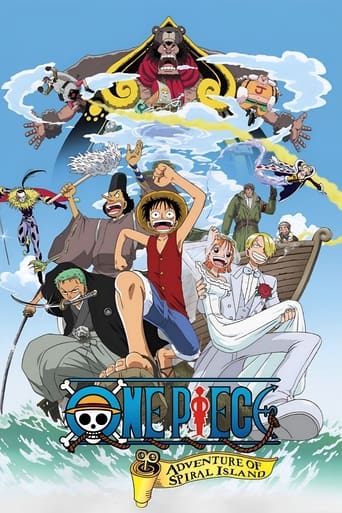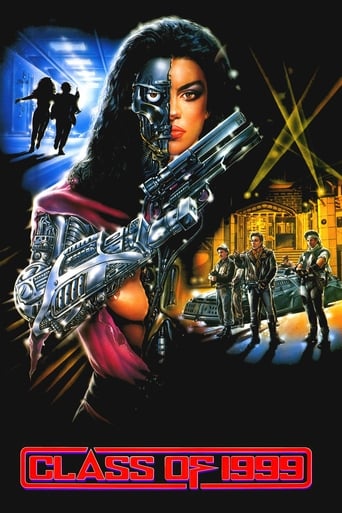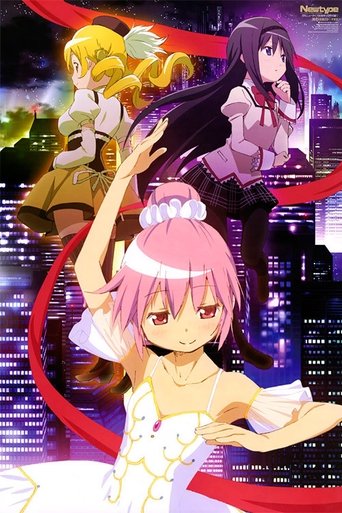
Akira (1988)
A secret military project endangers Neo-Tokyo when it turns a biker gang member into a rampaging psychic psychopath that only two teenagers and a group of psychics can stop.
- Katsuhiro Otomo
- Hiraoki Sato
- Yoshio Takeuchi
- Izo Hashimoto
- Katsuhiro Otomo
- Katsuhiro Otomo
Rating: 7.9/10 by 4229 users
Alternative Title:
อากีรา ไม่เหมือนคน - TH
아키라 - KR
光明战士阿基拉 - CN
亚基拉 - CN
アキラ - JP
AKIRA:1988 - JP
Akira - ES
폭풍 소년 - KR
Country:
Japan
Language:
日本語
Runtime: 02 hour 04 minutes
Budget: $5,700,000
Revenue: $49,000,000
Plot Keyword: army, street gang, saving the world, total destruction, experiment, general, megacity, atomic bomb, stadium, underground, mutation, dystopia, cyberpunk, based on manga, motorcycle gang, adult animation, psychotronic, anime, philosophical, 2010s, excited
Let's make one thing clear right off the bat: this review is gonna be positive. _Akira_ is not only my favorite anime but my favorite animated film bar none and one of my favorite films in general. Katsuhiro Otomo has crafted an animated sci-fi actioner for adults that's good, great in fact, a rarity since the vast majority of "adult" animation fails miserably by relying on dopey sex jokes and idiotic plot rather than solid storytelling and likable characters. Otomo's film weaves together themes of friendship, honor, betrayal, the deadly consequences of playing God, gang war, espionage, corruption, and the abuse of power while maintaining a breakneck pace throughout its running time. Throw it all in a blender and you've got one of the greatest, if not _the_ greatest animated film of all time, a classic in every sense of the word. On July 16, 1988, Tokyo was obliterated in a massive explosion, setting off World War III. In 2019, Tokyo has been rebuilt as Neo-Tokyo, a megalopolis crawling with malignant crime and governed by corrupt politicians where 16-year-old Shotaro Kaneda (Cam Clarke in the 1988 Streamline dub, Johnny Yong Bosch in the 2001 Pioneer dub, Mitsuo Iwata in Japanese) is the tough, cocky, skirt-chasing, and bullheaded leader of the Capsules, a biker gang that's currently at war with the Clowns, a band of savage rapists. Kaneda's gang consists of his friends, 15-year-old Tetsuo Shima (Jan Rabson, Joshua Seth, Nozomu Sasaki) who's like a brother to him, 15-year-old Kai (Bob Bergen, Anthony Pulcini, Takeshi Kusao), and 16-year-old Yama (Tony Pope, Michael Lindsay, Masaaki Okura) and a few others. During a brawl with the Clowns, students are protesting and an odd-looking boy named Takashi (Barbara Goodson, Cody Mackenzie, Tatsuhiko Nakamura) with psychic powers has been abducted. After Tetsuo takes down a Clown, his bike explodes upon nearly ramming Takashi. The boys arrive to find a battered Tetsuo. The army, led by Colonel Shikishima (Pope, Jamieson Price, Taro Ishida), arrives on the scene and takes both Tetsuo and Takashi away, while the boys are arrested. At the police station, Kaneda gets 17-year-old resistance member Kei (Lara Cody, Wendee Lee, Mami Koyama) released with them, having taken an interest in her. Dr. Onishi (Lewis Arquette, Simon Prescott, Mizuho Suzuki) and his team of scientists conduct experiments on Tetsuo, prompting his escape. After Tetsuo steals Kaneda's bike to run away with his girlfriend Kaori (Goodson, Michelle Ruff, Yuriko Fuchizaki) and both are attacked by the Clowns, Tetsuo beats a Clown to a pulp before he is again taken by the army to the facility that also holds Kiyoko (Melora Harte, Sandy Fox, Fukue Ito who is credited as Sachie Ito), Takashi, and Masaru (Bergen, Mackenzie, Kazuhiro Kamifuji who is credited as Kazuhiro Kando). When Kaneda tries to find out what happened to Tetsuo, he and Kei soon find that Tetsuo, newly equipped with telekinesis, is being consumed by psychosis, and after he murders one of their friends, an enraged Kaneda resolves to stop him. As you can probably guess from the summary, there's a lot going on in _Akira_, enough that it takes a few times seeing it to get everything, making repeat viewings that much more rewarding. Even with Otomo having removed much of what was in his then-incomplete manga, there's still more than enough to warrant its 124-minute length. We see Kaneda worry about Tetsuo as a true friend does, Tetsuo lose his grip on sanity and become someone else, and Colonel Shikishima struggle against dirty politicians who only care about money; it's interesting, arguably scary, to consider how much of this stuff is actually happening in the real 2019 and _has been happening for ages_. We see the dangers of playing God in the result of Dr. Onishi's experimentation as Tetsuo wreaks havoc on Neo-Tokyo which also doubles for the abuse of power and even earlier when Colonel Shikishima says that maybe they should leave that power alone. We also get glimpses at honor when Kaneda tries to curb Tetsuo from killing a Clown he's already beaten severely and with Colonel Shikishima's musings on a soldier's duty. On top of that, Otomo throws in religious fanaticism as people blindly follow Tetsuo, thinking he's “Akira.” There's more where that came from and the stakes keep rising to keep you on the edge of your seat until the endgame brings things to a close with a bang. Due to Otomo and Izo Hashimoto's excellent writing skills, the film isn't overstuffed and nothing feels out of place. The animation is stunning. All 327 colors are jaw-dropping; check out those reds. Each background is vastly detailed; the streets of Neo-Tokyo are gritty and grimy, buildings vary from excellent condition to run-down and deteriorated, we see walls and even a door with English profanity painted on them, and the sewers are as filthy as a real one while the interiors of the hospital are exceptionally clean in contrast to the clutter and graffiti of the school the boys attend. Each character looks like a real person, with the wide array of facial expressions that entails, while clothing looks like what real people wear. The gore is also highly realistic. Let it be stated right up front that anyone without an iron stomach will want to steer clear of _Akira_. Internal organs spill out, a cop loses half of his face, and limbs are removed, which is not to mention the mutation scene akin to something out of John Carpenter's _The Thing_. With that said, the gore serves the story rather than the reverse. The attention to detail goes even further to the few animals depicted in the film; the attack dogs near the beginning and even the dog that's seen in a commercial on a TV in the background look like real dogs and the rats in the sewer look like real rats. Put it all together and it's a depiction of 2019 that looks a lot like the real thing. Another element that never ceases to amaze is the way Otomo keeps everything perpetually moving. Otomo's decision to record the dialogue first and animate every nuance of the actor's mouth is where he pulls out all the stops since this wasn't done in Japan at the time, making it even more impressive that both dubs match the animation as well as they do. Whichever version one prefers, though this fan is partial to the Streamline dub - probably since it's how I first saw the film, performances excel across the board. Clarke, Yong Bosch, and Iwata are uniformly excellent as Kaneda, the tough, cocky and womanizing biker who cares about his friends and won't let anyone hurt them if he can help it, a lot like I was at that age; moreover, that was around the time my sister became consumed by psychosis in much the same way Tetsuo does. While some have argued against both Clarke and Yong Bosch (usually in favor of the other) as sounding too old, I don't think that's the case with either; when I was 16, I didn't sound all that far removed from Clarke's take, having had a naturally deep voice since age 12. Another argument some have made against Clarke is that he speaks in monotone, but nothing could be further from the truth; his tone changes appropriately with the situations the character finds himself in. The same can be said of Rabson, Seth, and Sasaki as Tetsuo, though Seth lags just a little behind. With that said, this can be partly attributed to the Pioneer dub script, though it _is_ grating that Seth often mispronounces Kaneda's name as “Kah-nee-duh” rather than “Kuh-nay-duh” or “Kah-nay-duh.” Take the scene where Tetsuo advances on the soldiers in the government hospital and Seth says, “It's no use hiding anymore,” while neither Rabson nor Sasaki says, “anymore.” It's not that big a deal and it can be attributed to the Pioneer dub script, but it takes away from his menace some. With that said, all three portray him as an abused kid who loses his sanity and despite being the villain, you feel bad for him - or at least I do since I see a lot of my mentally ill little sister there. Cody, Lee, and Koyama are first-class across the board as Kei, portraying her as tough but sensitive, well in line with how Otomo conceived her. The same can be said of Pope, Price, and Ishida as Colonel Shikishima, playing up his no-nonsense attitude and sense of a soldier's duty. Bergen, Pulcini, and Kusao are superb as Kai, one of the film's most likable characters. So are Pope, Lindsay, and Okura as Yama, the most confrontational Capsule, and this can also be said for the rest of the three casts. Long story short, you can't go wrong with any of them and each dubbed or subbed option is entertaining in its own way and tells the story faithfully enough. Music is a crucial part of any film. _Akira_ is no exception and the Geinoh Yamashirogumi are up to the challenge, using drums, chants, guitars, gamelan percussion, and even a church organ to form Akira's musical score. _Kaneda_ is the most recognizable, having been used in nearly every trailer. It's easy to see why; it's an exhilarating track and it's hard not to feel pumped once you've heard it. The same can be said of _Battle Against the Clowns_, _Tetsuo_, and _Exodus from the Underground Fortress_. The score mostly remains the same, with the only radically different version being the Japanese hypersonic track that Geinoh Yamashirogumi founder Shoji Yamashiro mixed in 2008 for the film's Blu-ray release. In this version, which Yamashiro mastered at 192 kHz, music has been moved around, some pieces are shortened, some are replaced with alternate versions, and the piece used during the flashback to Kaneda and Tetsuo's first meeting has been replaced with an organ, heavily altering the scene and not necessarily for the better; if you want my honest opinion, the flashback is more powerful with the original piece of music sampled from Requiem. That said, the entire score is incredible and I've listened to it countless times. In addition to the score itself, Otomo squeezes in _Tokyo Shoeshine Boy_ by Teruko Akatsuki during the scene at the mall where the groupies walk off from Kaneda, Kai, and Yama. Throw a head-turning sound design into the mix and you've got a terrific film that's firing on all cylinders. _Akira_ is a fun and exciting film I could watch over and over again; as of writing, I've seen it upwards of 30 times since my first viewing. Wanting to see it ever since age 11, it knocked my socks off when I finally saw it at 18. At 30 years old, it continues to stand the test of time. It's a timeless film, just as relevant today in 2019, if not more so than when it first dropped on Japan in 1988 and the United States in 1989. _Akira_ was one of the first anime to arrive in the western world uncut; without it, we may not have _Nausicaä of the Valley of the Wind_ and many more of the best Japanese animation has to offer without a single frame removed. _Akira_ is the best animated film ever made for an adult audience and one of the best films of the 1980s, anime or otherwise. Its characters are well-drawn and feel real, it deftly handles global issues that are still at work today, its frenzied action scenes continue to thrill with repeated viewings and it's vastly quotable. Its imagery will remain burned within your psyche for the rest of your natural life and its musical score will ring inside your eardrums long after the credits roll. If you love sci-fi, love action and can stomach the violence, you should see _Akira_ at least once. Who knows? Maybe you'll like it and want to come back to it repeatedly. **Very highly recommended.**
It has been said that when Oppenheimer witnessed the first atom bomb test, he said, "Now I am become Death, the destroyer of worlds." This may actually be a mis-translation of the Bhagavad-Gita, which deals with illusion and impermanence. Nevertheless, the sentiment that great achievement in science, like great power, carries great responsibility, remains true. Yet to date, homo sapiens has consistently shown that it is not ready for this dilemma. The string of films and sci-fi novels that deal specifically with this subject is long and varied with many excellent examples: Lang's Metropolis, Robert Wise's The Day the Eartch Stood Still, The Terminator, Blade Runner, and Ex-Machina to name just a few. Akira is another, very well-done, classic in this field. The story-telling, the themes, the action, and especially the jaw-dropping animation are masterful, and likely unequaled in the genre. The animation alone is a magnus opus.
**Technically very good, but so confusing that it doesn't work.** I'm 33 years old and my childhood saw the popularization of Japanese anime in Europe and the West thanks to hits like “Dragon Ball” and others. However, I have to say that, even as a child, I hated this type of highly stylized animation, so different from what I was used to seeing. Even so, it is necessary to grant this film some value. The animation it brings us is of excellent quality and very well designed, and the perfectionism typical of Easterners is clearly evident in the attention given to the smallest details, scene by scene. As has been the hallmark of modern anime, it has a lot of action and moves in a futuristic, dream-like environment, much to the liking of the Japanese. In fact, it is quite remarkable that they are a people so attentive to the future and so respectful of their own traditions and their past... a good example of how both things are not incompatible, quite the contrary, a sign that we can build the future without cut with the past. The problem with this film is that, until now, I haven't been able to understand the story. It's confusing, and the feeling I got is that the creators focused so much on the action and technical execution of the drawings that they totally forgot to do all of this based on a logical story, capable of being followed without difficulty. Is there something that I, with a Western mindset, have not been able to understand? I don't know. I just know that this film, regardless of its technical value, didn't work for me.




































